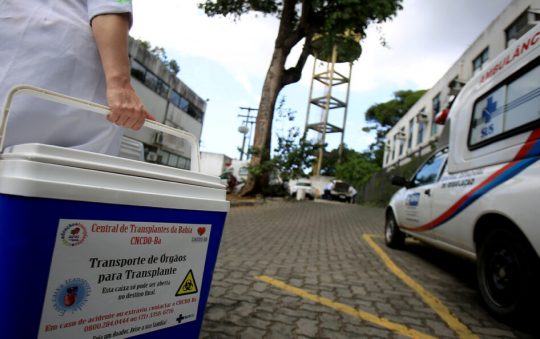
Firefighters are one of several groups of public servants in Los Angeles County, whose mission is to protect the community, preserve life and property and promote public safety. Yet, African-American firefighters have often been treated as second-class citizens through systemic and personal channels.
Take firefighter Earnest Roberts for example who worked at Station No. 10 on Hill Street and Venice Boulevard in the 1950s. White firefighters at the same station smeared human feces on Roberts’ pillow. Unaware and simply seeking rest, Roberts placed his head on the pillow as the men laughed. Immediately following the incident, Roberts suffered a nervous breakdown and had to be taken from the fire station in an ambulance.
In many instances, white firefighters including fire chiefs continued similar practices of bullying and intimidation in protest of integration. Roberts did, however, ultimately recover and return to the department to complete a 34-year career with the Los Angeles Fire Department.

The resilience of Roberts has echoed in many fire stations across Los Angeles including his own kin, Winston Roberts who went on to serve as a probationer at the exact same Station No. 10 where his father had been humiliated two decades before.
African-American men and women have continued to pursue their livelihood with the vigor and tenacity that exemplifies the history of African-Americans in the general context of America.
“We’ve had a long storied history particularly in Los Angeles,” said Brent Burton, historian and former president for the African-American Firefighters Museum.
The efforts to uncover and preserve the history of black firefighters in Los Angeles have resulted in the African-American Firefighters Museum, which documents a timeline that was thought to begin with George Bright in 1897. It was later discovered through happenstance that Bright was not in fact the first black firefighter in Los Angeles. Pictures of Sam Haskins, a Virginia-born slave, were later recovered dating back to 1892, which makes Haskins the first official African-American firefighter in Los Angeles. Sadly, he became the first known firefighter in the city to lose his life on the job in 1895.

Bright was the first black firefighter in Los Angeles to receive a promotion in 1902 to lieutenant, which oddly prompted the beginning of segregation within the fire department. “It was unheard of in those days for black men to command others,” Burton said. The fire department mirrored the rest of the prejudicial American society that saw blacks as unequal.
The Los Angeles fire chief at the time was forced to re-integrate the fire stations. “He was a southerner and he believed that segregation was the law of the land,” Burton said. “When he was ordered to obey the landmark decision in Brown vs. the Board of Education that stated separate but equal no longer held merit, he refused.”
The fire department has gone from integrated to segregated to integrated. The changes were met with much pushback and opposition. It was as a result of the advocacy of city leaders and the formation of the Stentorians, an organization comprised of black firefighters, which continued to advance integration efforts.
Though the fire stations were legally required to be integrated that did not discount the reality of what it meant to be a black man at one of these stations. As history tends to abandon the specifics, it is important to note that the department’s agenda was to make the environment so abysmal and hostile that black firefighters would quit.
White firefighters gave cruelty their best shot. At fire station No. 46 on Vernon Avenue, Reynaldo Lopez was the only black man who insisted on staying even after his counterparts hung a sign on the kitchen door that read, “White Adults.” These were times when leaning on his fellow Stentorians for support was a necessity.
The divide became greater, despite laws changing more in favor of integration simply because the department was relentless in their efforts to allow attrition to result in a severe reduction in the number of black firefighters.
Black firefighters just kept pushing back. In 1955, one of the leaders of the integration movement within the Los Angeles fire department was Arnett Hartsfield who decided to obtain a law degree from the University of Southern California, in order to better equip the African-American with the legal resources necessary to create and sustain viable work environment that gave truer meaning to the equality promised by segregation.
Hartsfield, affectionately described as a jewel by Burton was, “a keeper of our history, our story.” He saved newspaper clippings and wrote down details of confrontations, including his own. When Hartsfield went through the process for becoming a firefighter, the Fire Academy started training recruits on a 24-hour schedule. Despite the mandated segregation, it was deemed unacceptable for black recruits to stay overnight with their white counterparts, so Hartsfield was forced to stay in separate quarters at the Avalon station, which greatly diminished his ability to receive the same training. Although he was not disqualified like many of his predecessors had been, by his first day on the job, he had never touched a hose or ladder.
Across stations, the practices remained steadfast leading to the firing of the fire chief in 1956. Even that did not stop the fire department from continuing in its disparate and unfair policies. During the 60s, the fire department hired approximately 2,000 individuals of which there were 10 black firefighters hired and out of those 10 only 6 made it through probation. Then Mayor Sam Yorty issued a formal order to the Fire Department that stated firefighters had to eat together. This small mandate exemplifies how the more things changed, the more they stayed the same.
The city of Los Angeles adopted a consent decree that called for the hiring of 50% firefighters of color in all entry-level recruit classes. Yet, black applicants were being disqualified for miniscule reasons, or their applications were thrown away or their paperwork misplaced. By that time there were 45 black firefighters on the roster out of a force of 3,200, about half of the black firefighters were due to retire.
“The fight is no longer integration because we have that, but now the Stentorians deal with recruitment, upward mobility and any issues that impact black firefighters,” said Burton.
While the plight of African-American males was dismal, the path to firefighter for African-American women was even more troubled. The very first black woman on record was Molly Williams in 1818 in the city of New York. She was a slave and her master was a volunteer firefighter who took her with him and she fought fires.

It was not until 1984, however, that Los Angeles received its first black female firefighter. d’Lisa Daives made it through the training academy and was assigned to fire station No. 34.
Today, both African-American men and women serve in positions from fire chief to commissioner across the country, so it has been proven to be able to be successful in this job. The changes in practices today have vastly evolved since the first documented black firefighters came on the scene, while the amount of black firefighters coming on the job has trended downwards.
“We have to make sure that the legacy carries on from those who have come before us and all that they have gone through to prove that we are equal, we are just as qualified to be here as much as anyone else,” Burton stressed.
The fire service is one of the major public safety entities in the city, county and country. Whether it is black, women or another minority group, it is always important to have people who reflect the communities that they serve. Reginald Ballard and Reynaldo Lopez are still alive today, survivors of that integration struggle.
The African-American Firefighters Museum, located on Avalon and at one of the original fire stations, is dedicated to preserving the legacy and telling the story – both good and bad – of the strong men and women of color who literally braved fires and storms to protect the residents of Los Angeles.






